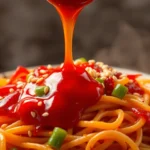Introduction to the DILF Term: Definition and Origins
The term dilf is a colloquial acronym that stands for “Dad/Daddy I’d Like to Fuck.” While it might initially evoke imagery of a mature, attractive father figure, the term’s usage has evolved beyond its literal meaning. Today, dilf is often used to describe an older, sexually appealing man who embodies maturity, confidence, and physical attractiveness. Interestingly, the label does not strictly require the man to be a biological father; rather, it emphasizes the qualities that make him desirable—such as charisma, style, and a commanding presence.
The origins of the term are closely linked to the cultural adoption of similar slang descriptors like MILF, which gained widespread popularity in the early 2000s. MILF, standing for “Mother I’d Like to F*,” originated in pop culture and was popularized by movies, television, and internet memes. Following the same pattern, DILF entered the vernacular shortly after, often used humorously or as a compliment. It gained traction within online communities, social media, and adult entertainment sectors, cementing its place as a recognizable label for a certain type of attractive older man.
The term’s emergence coincided with a broader cultural shift that embraced celebrating mature attractiveness and challenging traditional notions of youth-centric beauty standards. DILF is now part of the lexicon that reflects admiration for older men who exude confidence, masculinity, and sex appeal, regardless of whether they are actual fathers. As with many slang terms, its popularity is driven by both humor and genuine appreciation, making it a versatile descriptor in contemporary culture.
Cultural Context and Popular Media Representations
Daddy Halsin from Baldur’s Gate
One of the most notable modern examples of the dilf archetype appears in the realm of video games, specifically in the popular role-playing game Baldur’s Gate. The character Daddy Halsin is known for his protective, strong, and nurturing personality, coupled with an attractive, mature appearance that has endeared him to fans. His lore describes him as a powerful druid with a commanding presence, embodying many qualities associated with the DILF archetype—masculine strength, wisdom, and a caring demeanor.
Fans affectionately refer to him as Daddy Halsin, and the term has gained popularity within gaming communities and social media as a result. This modern interpretation highlights how the DILF label can extend beyond real-life physical attractiveness to encompass fictional characters that embody the qualities of strength, maturity, and appeal. The character’s popularity demonstrates that the DILF archetype resonates across different mediums and continues to evolve in contemporary pop culture.
Fred Andrews in Riverdale
Another iconic portrayal of the DILF archetype is Fred Andrews, a character in the hit Netflix series Riverdale. Portrayed by actor Luke Perry, Fred Andrews is depicted as the quintessential mature, attractive father figure—kind, strong, and charismatic. His rugged good looks, leadership qualities, and protective nature have led fans to colloquially describe him as a DILF.
Riverdale’s portrayal of Fred Andrews underscores how the archetype extends into television, representing an aspirational figure embodying masculinity, stability, and attractiveness. His character’s popularity among fans demonstrates how the DILF label can be tied to personality traits and emotional appeal, not solely physical appearance.
Rob’s Father in American Pie Presents: The Book of Love
The American Pie franchise, known for its comedic take on teenage and adult sexuality, brought the term dilf into mainstream awareness. In the 2009 movie American Pie Presents: The Book of Love, a character who is Rob’s father is depicted as an attractive, charismatic older man. The film humorously emphasizes his appeal, emphasizing the qualities that make him a DILF—confidence, maturity, and physical attractiveness.
This portrayal exemplifies how the DILF term is often used humorously, especially in contexts that play with the idea of attraction to older men. The film’s popularity helped cement the term in popular culture, making it a recognizable part of the vernacular associated with humor and admiration for mature masculinity.
The Role of DILF in Internet and Pop Culture
DILFs of Disneyland Instagram Account
The internet has played a significant role in popularizing and normalizing the concept of DILFs. One prominent example is the Instagram account DILFs of Disneyland, which boasts over 300,000 followers. This account curates photos of attractive, mature men enjoying family activities at Disneyland, often highlighting their confidence, style, and charm.
This social media phenomenon showcases how DILFs are celebrated in everyday life, emphasizing the appeal of older men in casual, family-friendly environments. The account’s popularity reflects a broader acceptance and appreciation of mature masculinity, with followers engaging in humor, admiration, and sometimes playful envy.
Reddit Community r/DILFs
Online communities like Reddit have also contributed to the cultural discourse surrounding DILFs. The subreddit r/DILFs, which has nearly 100,000 members, is a space where fans and enthusiasts share photos, memes, and discussions about attractive older men. The community blends NSFW content with humor and admiration, creating a space for shared appreciation of the archetype.
Reddit’s open, anonymous environment allows users to explore and celebrate the DILF phenomenon freely, fostering a community that emphasizes attraction, humor, and cultural commentary. This digital space exemplifies how the DILF concept has transitioned from niche slang to a broader cultural phenomenon with a dedicated following.
DILF in Adult Entertainment and Search Trends
The DILF term has also become a significant tag within adult entertainment industries. As with MILF, the label DILF helps categorize and market content featuring attractive older men, appealing to viewers seeking a specific type of attraction. Search engine data reveals that the term is consistently among the most searched for tags related to mature male content, indicating sustained and growing interest.
Adult websites and content platforms have recognized the commercial potential of the DILF archetype, creating specialized content and marketing campaigns that target audiences specifically interested in this category. This trend reflects the normalization and celebration of mature masculinity within adult entertainment, contributing to the term’s widespread recognition and usage.
The Social Perception and Humor Around DILF
Despite its popularity, the DILF term often carries a humorous or playful connotation. It is frequently used in a tongue-in-cheek manner, emphasizing the idea of attraction to older men as both a genuine compliment and a source of humor. This duality allows for a wide range of social interactions, from lighthearted teasing to sincere admiration.
In social settings, calling someone a DILF can be a compliment that recognizes their attractiveness and maturity, but it can also serve as a playful joke among friends. The humor around the term stems from its contrast to traditional notions of youth and beauty, highlighting the appeal of maturity and confidence in men of a certain age.
Moreover, the term can challenge stereotypes about aging, suggesting that attractiveness and sex appeal are not exclusive to younger individuals. This shift in perception aligns with broader cultural trends that celebrate aging and masculinity.
Conclusion: Why DILF Continues to Resonate / Understanding the DILF Phenomenon: Attraction, Culture, and Popularity
The dilf phenomenon is a multifaceted cultural archetype that encapsulates admiration for mature masculinity, confidence, and attractiveness. Its origins in pop culture, from movies like American Pie to television series like Riverdale, demonstrate its versatile appeal across different media. The term’s popularity on social media platforms such as Instagram and Reddit further cements its role in contemporary internet culture.
As a descriptor, DILF has transcended its initial humorous or provocative intent to become a broader symbol of appreciation for older men who embody strength, style, and charisma. Its usage in adult entertainment and search trends underscores its significance in shaping modern perceptions of masculinity and attractiveness.
Overall, the DILF archetype resonates because it challenges ageist stereotypes and celebrates maturity as a desirable trait. Whether in real life, fiction, or online communities, the term continues to evolve, reflecting changing attitudes towards masculinity, aging, and attractiveness. Its popularity demonstrates an embracing of diversity in beauty standards and a recognition that appeal and charisma are not confined to youth.
Understanding the DILF phenomenon gives us insight into how language, media, and culture intersect to shape perceptions of attractiveness and masculinity. It highlights the importance of confidence, personality, and style—qualities that make the archetype universally appealing. As the cultural landscape continues to evolve, the dilf remains a vibrant symbol of mature appeal and admiration, reflecting broader societal shifts towards celebrating all ages and forms of attractiveness.









